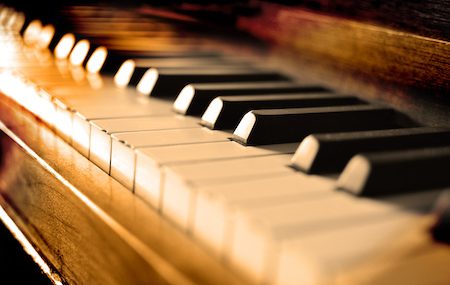How often should you replace your piano? Pianos are one of the most durable personal items you own. Still, they can’t last forever. What should you watch for? How will you know?
Pianos aren’t like other pieces of furniture. For many households, it’s one of their prized possessions. It may have been handed down from a favorite grandmother. They may intend to hold onto it until their children want to bring it into their own homes.
Yet even though pianos come with the stigma of strength and longevity, they are delicate instruments that will wear down over time. Each piano is built from more than 10,000 pieces, all working together to create a classic design. Wooden parts are connected to metal wires, held together by adhesive glue. Even with proper maintenance and repair, it won’t last forever.
Here is an example of the average lifespan.
Year one
Your piano needs a lot of TLC during its first year. With wood and metal recently formed and fitted together, it requires consistent tunings during this time to ensure it stays in proper condition. Without these tunings, it will need more repair, including voicing and pitch correction, in the future.
Year two to year ten
With proper care in the first year, the piano stabilizes by the second year. As long as your piano acclimates well to the surroundings, and isn’t placed in a volatile environment, (humidity swings, drafts from windows and doors, direct sunlight, etc) it should settle in and require regular tunings. The tone may change as the hammers flatten or change their shape from the constant wear of moving against the strings. Voicing is a part of a regular maintenance plan. If you work with a piano technician regularly, they will be able to offer guidance on keeping your piano in the best shape.
Year ten to year thirty
Maintenance is critical as your piano settles in. If it’s a high-quality piano, it should wear in nicely as it’s well cared for. Hammers will continue to wear over time. The action will start to wear depending on how often it’s played. This is where well-cared-for piano ages well compared to one neglected and pushed aside. With temperature variances and humidity swings, soundboards can crack, strings and pins can rust, and the finish can dull.
Year thirty to year fifty
This is where a piano wears down. Hammers wear down. Action starts to fail. Tonal quality disappears. Even with regular tuning, a technician may start to recommend repair and restoration.
This is where people start to wonder if replacing your piano is better than making significant repairs. This is where it’s time to ask questions:
- Does the piano hold significant meaning to me:
- What does a reconditioned piano look like? Is it worth it to me?
- Would I be better with a new piano?
This can be a difficult decision, especially if there is an emotional attachment to the piano.
Need help? That’s what we’re here for.
We can help you make the right decision to suit your needs. Whether repairing the piano you have, or purchasing a new or used one to suit your needs better, we have the answers you’ve been looking for.


